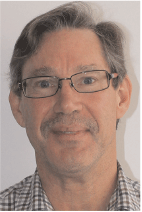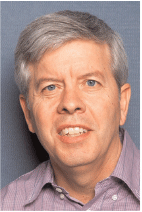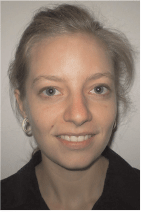Subtle oil fields along the Western Flank of the Cooper/Eromanga petroleum system
Mark Sales A , Malcolm Altmann A , Glen Buick A , Claire Dowling A , John Bourne A and Alexandra Bennett ABeach Energy.
The APPEA Journal 55(2) 440-440 https://doi.org/10.1071/AJ14075
Published: 2015
Abstract
Oil production from Cooper/Eromanga started in 1978, peaked in the 1980s and began a steady decline. Oil production from the Western Flank commenced in 2002 and has steadily increased. In the year until July 2014, a total of 8.6 million BBL of oil was produced from 16 active fields along the Western Flank, bringing the cumulative total to 24 million BBL. Western Flank oil has underpinned a tenfold growth in market capitalisation in four listed Australian companies: Beach Energy, Drillsearch Ltd, Senex Energy and Cooper Energy.
Two sandstone plays dominate the Western Flank petroleum geology: the Namur Sandstone low-relief structural play and the mid-Birkhead stratigraphic play. The use of 3D seismic has improved the definition of both plays, increased exploration success and optimised field appraisal and development drilling.
Success rates have improved despite most Namur structural closures being close to the resolution margin for depth conversions (less than 8 m). Seismic attribute mapping is being refined in the more difficult search for mid-Birkhead stratigraphic traps with recent exploration discoveries indicating improved success.
Reservoir properties in the Namur are excellent with multi-Darcy permeability, unlimited aquifer strength, low gas/oil ratio (GOR) and low residual oil saturation. This combination leads to an oil recovery factor greater than 75%. Initial free-flow production rates commonly exceed 6,000 BBL per a day.
The mid-Birkhead reservoir is also of high quality but the lack of a strong aquifer drive reduces primary recovery.
New and re-processed 3D seismic and water-flood projects are expected to drive further discoveries, reserve and production growth.

Mark Sales completed a BE (Chem, 1st Class Hons) and an LLB (Hons) at the University of Adelaide. He started his career at Santos Ltd working in subsurface and field operational roles. In 2003, he moved to the UK, working as a reservoir engineer for GdF Britain Ltd, BHP Billiton and RWE Dea (UK) Ltd, primarily on assets in the southern North Sea and Algeria. Mark joined Beach Energy in late 2007 as a reservoir engineer and is now team leader of exploration and development in the Cooper/Eromanga Basin oil team. Member: SPE. |

Malcolm Altmann has a BSc (Hons) in geology from Flinders University. After initial work in coal exploration, he moved to Delhi Petroleum in 1983 and Santos Ltd in 1987. He joined Beach Energy in early 2002 and is now geological manager. He has broad exploration, development and production experience in most of Australia’s onshore and offshore petroleum basins, including the Cooper/Eromanga, Amadeus, Gippsland and North West Shelf regions. Member: PESA, AAPG and SPE. |

Glen Buick received his BSc (Hons) in geology from the University of Adelaide. He initially joined Geoservices as a mud logger, then Santos as a geologist in 2002. In his eight years at Santos, he gained a broad range of skills involving exploration and field development in the Cooper, Carnarvon and Otway Basins, along with field studies as part of the PNG LNG project. In 2010, he joined Saudi Aramco, where he worked as an exploration geologist, generating and successfully testing two new stratigraphic play types in the Arabian Basin. He returned to Australia in 2013 and is now senior geologist with Beach Energy. Member: PESA, AAPG and EAGE. |

Claire Dowling attended the University of Adelaide obtaining honours in petroleum geology and geophysics from the Australian School of Petroleum. She worked for seven years for Chevron Australia in operations and exploration geology roles. She is an exploration geologist with Beach Energy. Member: PESA, SPE and AAPG. |

John Bourne has spent 34 years working in petroleum geophysics in the Australasian region with Esso Australia, Santos and, since 2006, Beach Energy, where he is chief geophysicist. His main area of expertise is the interpretation of seismic data from prospect generation to field appraisal and development. He is a BSc (Hons) graduate of the University of Adelaide. Member: PESA and ASEG. |

Alexandra (Ally) Bennett completed a BSc in petroleum geoscience at the University of Adelaide and graduated in with honours in geology and geophysics from the Australian School of Petroleum. She started work as a graduate geoscientist for Beach Energy in 2012 and is now a geophysicist working in Beach Energy’s Cooper/Eromanga Basin oil team. Member: PESA and ASEG. |
References
Altmann, M.J., Gordon, H.M., 2004—Oil on the Patchawarra Flank – some implications from the Sellicks and Christies oil discoveries. In: Boult, P.J., Johns, D.R., and Lang, S.C. (eds.), Eastern Australasian Basins Symposium II, Special Publication. Adelaide: PESA. 29–34.Heath, R.S., Mcintyre, S., and Gibbins, N., 1989—A Permian origin for Jurassic oil in the Eromanga Basin. In: O’Neil, B.J. (ed.), The Cooper and Eromanga Basins, Australia. Adelaide: PESA, SPE and ASEG. 405–16.
Petroleum Exploration and Production System (PEPS), 2014—PEPS-SA Database. Accessed 6 February 2015. <http://petroleum.dmitre.sa.gov.au/access_to_data/peps-sa_database>.


